Recent Posts
Why Rainwater isn't Always Safe
5/1/2024 (Permalink)
Rainwater, that natural elixir from the skies, has long been romanticized for its purity and freshness. But beneath its seemingly pristine facade lie hidden risks that often go unnoticed. While rainwater can be a valuable resource in certain contexts, particularly for watering plants or washing cars, it's essential to recognize that it's not always safe for consumption or other uses. In this blog post, we'll delve into the reasons why rainwater isn't always as harmless as it appears.
1. Contamination from the Atmosphere:
Contrary to popular belief, rainwater isn't as pure as it seems. As it falls from the sky, rainwater can pick up various pollutants and contaminants present in the atmosphere. These pollutants include dust, dirt, pollen, chemicals from industrial processes, and even microorganisms such as bacteria and viruses. Consequently, rainwater collected directly from rooftops or open containers can contain a cocktail of harmful substances that pose health risks if ingested or used for household purposes without proper treatment.
2. Roof Contaminants:
The surface from which rainwater is collected plays a significant role in its quality. Many people collect rainwater from rooftops, which may seem like a logical choice due to its large surface area. However, roofs can harbor a multitude of contaminants that leach into the rainwater. These contaminants can include bird droppings, dust, mold, algae, and chemicals from roofing materials such as asbestos or lead-based paints. Without adequate filtration or treatment, rainwater collected from rooftops can be far from safe for consumption.
3. Risk of Bacterial and Viral Infections:
Rainwater, especially when collected in stagnant containers, can become a breeding ground for bacteria, viruses, and other pathogens. Mosquitoes, for example, are attracted to standing water and can lay their eggs in rain barrels or other collection systems. This increases the risk of mosquito-borne diseases such as West Nile virus and dengue fever. Moreover, bacteria such as E. coli and Salmonella can thrive in untreated rainwater, leading to gastrointestinal infections if ingested.
A Quick History Lesson about Us!
4/29/2024 (Permalink)
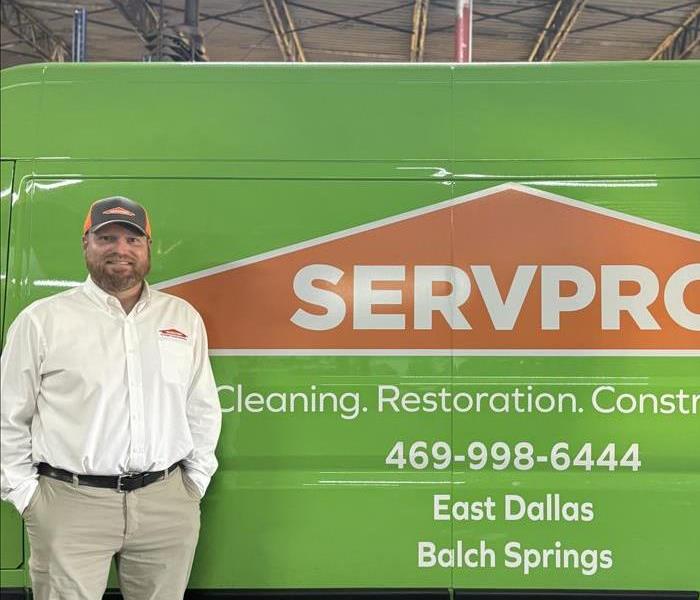 SERVPRO is happy to be the beacon of restoration and mitigation. Give us a call if you experience an emergency!
SERVPRO is happy to be the beacon of restoration and mitigation. Give us a call if you experience an emergency!
In the wake of disasters, both natural and man-made, a beacon of hope emerges to restore homes, businesses, and communities. That beacon is SERVPRO, a name synonymous with reliability, professionalism, and unparalleled service in the restoration industry. Let's embark on a journey through the history of SERVPRO, tracing its humble beginnings to its status as a trusted leader in disaster recovery and restoration.
The Early Years: A Vision Takes Shape
SERVPRO's story begins in 1967 when Ted and Doris Isaacson launched the company as a painting business in Sacramento, California. However, their entrepreneurial spirit and keen foresight led them to recognize a growing need for specialized cleaning and restoration services. With dedication and determination, the Isaacsons transformed SERVPRO into a full-fledged cleaning and restoration company, laying the foundation for its future success.
Expansion and Innovation
As SERVPRO gained momentum, it expanded its services beyond cleaning to include fire and water damage restoration. The company's commitment to excellence and innovation propelled its growth, leading to the development of advanced restoration techniques and cutting-edge equipment. With a focus on continuous improvement and staying ahead of industry trends, SERVPRO became synonymous with quality and reliability in the restoration industry.
Weathering the Storms: Disaster Response and Community Support
Throughout its history, SERVPRO has been at the forefront of disaster response, providing critical support and assistance to communities in times of crisis. From hurricanes and floods to wildfires and tornadoes, SERVPRO's network of trained professionals stands ready to mobilize at a moment's notice, helping homeowners and businesses recover and rebuild in the aftermath of devastation. Beyond restoration services, SERVPRO is committed to giving back to the communities it serves, embodying the spirit of compassion and resilience.
Balch Springs Drying Equipment
4/24/2024 (Permalink)
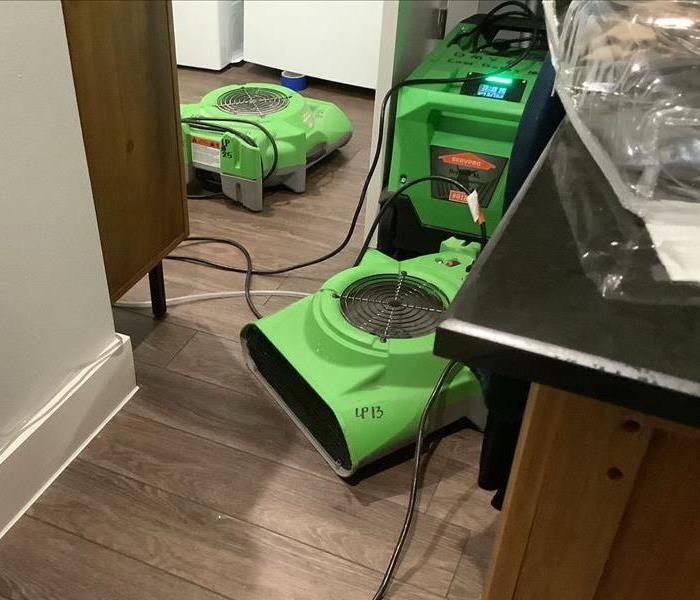 We'll work closely with you to develop a customized cleanup plan that meets your needs and exceeds your expectations.
We'll work closely with you to develop a customized cleanup plan that meets your needs and exceeds your expectations.
Don't wait to start the cleanup process – contact us today to learn more about our fire damage cleanup services and take the first step toward restoring your property to its former glory. Together, we'll rebuild and renew, one step at a time. ???? #FireDamageCleanup #RapidResponse #WeRestoreHope
Dangers of Water Damage in Your Kitchen
4/22/2024 (Permalink)
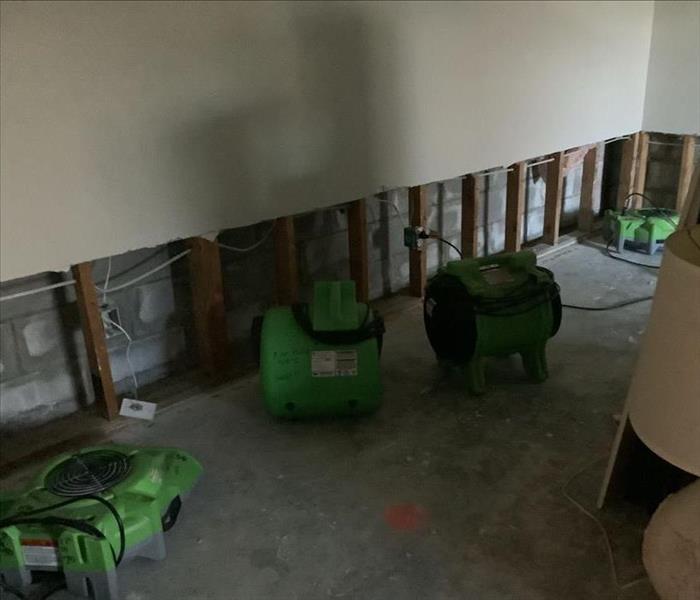 SERVPRO of East Dallas has seen kitchens suffering with water damage. Thankfully we have the knowledge and equipment to handle any size disaster.
SERVPRO of East Dallas has seen kitchens suffering with water damage. Thankfully we have the knowledge and equipment to handle any size disaster.
Water damage in the kitchen can pose various dangers and risks, both to the structure of the house and the health of its occupants. Here are some potential dangers associated with water damage in the kitchen:
Structural Damage: Water can seep into floors, walls, and ceilings, leading to structural damage such as rotting wood, weakened drywall, and compromised foundation. Over time, this can cause significant structural issues and compromise the integrity of the building.
Mold Growth: Moisture from water damage creates an ideal environment for mold growth. Mold can proliferate rapidly within 24 to 48 hours of water exposure, spreading on surfaces and releasing spores into the air. Mold not only damages surfaces but also poses health risks, as mentioned earlier.
Electrical Hazards: Water damage in the kitchen can affect electrical wiring, outlets, and appliances, leading to electrical hazards such as short circuits, electrical fires, or electrocution. Water and electricity are a dangerous combination and should be addressed promptly by professionals.
Slip and Fall Accidents: Water accumulation on kitchen floors due to leaks or flooding increases the risk of slip and fall accidents. This is particularly hazardous in a room where people frequently move around, carry objects, or stand on slippery surfaces.
Appliance Malfunction: Water damage can affect kitchen appliances such as refrigerators, dishwashers, and ovens, causing them to malfunction or stop working altogether. This not only disrupts daily routines but also poses safety risks if appliances malfunction unexpectedly.
Pest Infestation: Standing water and moisture in the kitchen attract pests such as cockroaches, ants, and rodents. These pests not only cause sanitation issues but also pose health risks and may further damage the property.
Water Contamination: Depending on the source of water damage, there is a risk of water contamination. For example, if the water comes from a sewage backup or a contaminated source, it can introduce harmful bacteria, viruses, or chemicals into the kitchen environment, increasing health risks for occupants.
Decreased Property Value: Untreated water damage can significantly decrease the value of a property. Potential buyers may be deterred by the prospect of dealing with existing damage or the possibility of hidden issues that could emerge later.
Addressing water damage promptly and thoroughly is crucial to mitigate these dangers and prevent further harm to both the property and its occupants. This often requires professional assistance to assess the extent of the damage, identify and fix the source of the water intrusion, and carry out necessary repairs and restoration work.
Explaining the Insurance Claims Process When It Comes To Water Damage Claims
3/21/2024 (Permalink)
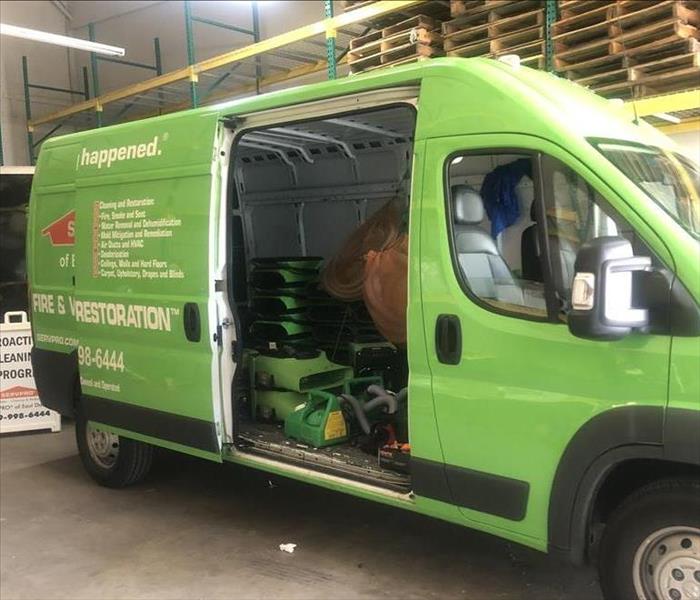 We understand the stress when going through a claims process, we hope this quick read will provide great information!
We understand the stress when going through a claims process, we hope this quick read will provide great information!
Navigating the claims process after experiencing home flood damage can be overwhelming, but understanding the steps involved can help ease the burden during such a challenging time.
Assessment and Documentation: As soon as it's safe to do so, assess the extent of the flood damage to your home. Take detailed photographs or videos of the affected areas before beginning any cleanup or repairs. This documentation will be crucial when filing your insurance claim.
Contact Your Insurance Company: Notify your insurance company as soon as possible to report the flood damage. Be prepared to provide them with the necessary information, including policy details, the date and time of the incident, and a description of the damage.
Review Your Policy: Take the time to thoroughly review your insurance policy to understand what is covered and any specific requirements or exclusions related to flood damage. Some homeowners' policies may not cover flooding, in which case you may need a separate flood insurance policy.
Schedule an Adjuster Visit: Your insurance company will likely send an adjuster to assess the damage and determine the amount of coverage you're entitled to. Be sure to provide them with all the documentation and evidence you've gathered, as well as any receipts or estimates for repairs.
Temporary Repairs: In some cases, you may need to make temporary repairs to prevent further damage to your home. Keep all receipts for these expenses, as they may be reimbursable under your insurance policy.
File Your Claim: Once you've gathered all the necessary information and documentation, submit your claim to your insurance company. Be sure to follow their specific procedures and deadlines for filing claims.
Cooperate with the Claims Process: Throughout the claims process, be prepared to cooperate with your insurance company and provide any additional information or documentation they may request. Keep detailed records of all communication and correspondence related to your claim.
Review Your Settlement: Once your claim has been processed, carefully review the settlement offer from your insurance company. If you have any questions or concerns about the amount or coverage provided, don't hesitate to reach out to your insurance adjuster for clarification.
Begin Repairs: With your insurance claim settled, you can now begin the process of repairing and restoring your home. Be sure to work with reputable contractors and keep your insurance company informed of any significant developments or changes to the scope of work.
Prevent Future Flood Damage: Take proactive measures to minimize the risk of future flood damage to your home, such as installing flood barriers, sump pumps, or elevation techniques recommended by floodplain management experts.
By following these steps and staying informed throughout the claims process, you can navigate the complexities of home flood damage insurance claims with greater confidence and peace of mind.
Our Little Town of Balch Springs
2/28/2024 (Permalink)
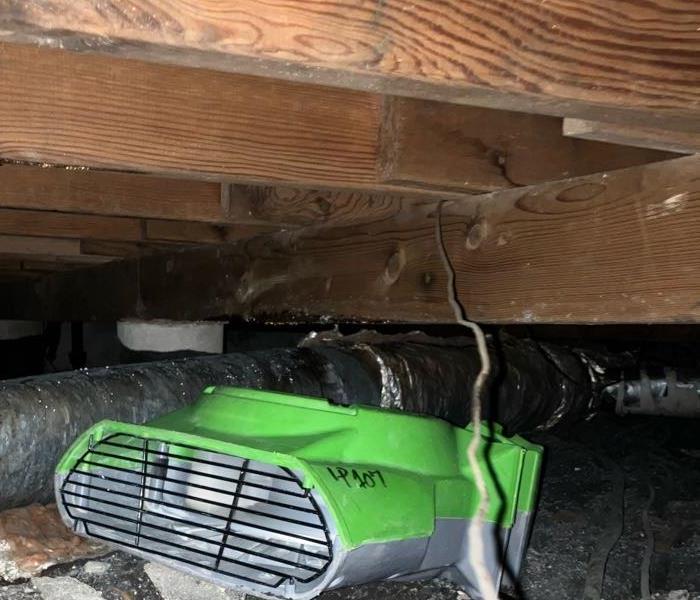 We love our town of Balch Springs, We Are Happy To Call This Town Home to Us.
We love our town of Balch Springs, We Are Happy To Call This Town Home to Us.
Howdy, y'all! If you're in the mood for a Texas-sized adventure filled with Southern hospitality, vibrant community spirit, and a whole lot of fun, then look no further than Balch Springs, Texas! Nestled in the heart of the Lone Star State, this hidden gem offers a unique blend of small-town charm and big-city excitement. So buckle up and get ready for a wild ride as we explore all that Balch Springs has to offer!
A Slice of Small-Town Heaven
Picture-perfect streets lined with quaint houses, friendly neighbors waving from their porches, and a strong sense of community pride—welcome to Balch Springs! Despite its close proximity to the bustling metropolis of Dallas, Balch Springs has managed to retain its small-town charm and laid-back vibe. Here, folks still take the time to stop and chat, support local businesses, and come together for community events like the annual Balch Springs BBQ Cook-Off or the Fourth of July parade.
Outdoor Adventures Galore
Nature lovers and outdoor enthusiasts will feel right at home in Balch Springs. With plenty of parks, green spaces, and recreational facilities to explore, there's no shortage of outdoor adventures to be had. Pack a picnic and head to Walter E. Luedeke Park for a day of family fun, complete with playgrounds, sports fields, and scenic walking trails. Or, for a more tranquil escape, spend an afternoon fishing or birdwatching at the serene Little Creek Park.
Dining Delights
Hungry after a day of exploring? Balch Springs has you covered with a delicious array of dining options to satisfy every craving. Sink your teeth into mouthwatering barbecue ribs at Big Daddy's Bar-B-Que, savor authentic Tex-Mex flavors at La Salsa Verde, or indulge in a hearty homestyle meal at Mama's Daughters' Diner. And for those with a sweet tooth, be sure to swing by Sweet Treats Bakery for a tempting selection of cakes, cookies, and pastries.
Family-Friendly Fun
Looking for entertainment the whole family can enjoy? Balch Springs has plenty of attractions to keep kids of all ages entertained. Take a trip back in time at the Balch Springs Historical Museum, where you can learn about the area's rich history through exhibits, artifacts, and interactive displays. Or, for a day of adrenaline-pumping excitement, head to Urban Air Adventure Park for trampolines, climbing walls, and endless fun for the whole family.
Festivals and Events
No visit to Balch Springs is complete without experiencing one of its lively festivals or events. From the annual Balch Springs Arts and Crafts Fair to the Balch Springs Fall Festival, there's always something happening in this vibrant community. Dance to live music, browse local artisan vendors, and sample delicious food from around the world—all while soaking in the festive atmosphere and celebrating the unique spirit of Balch Springs.
Wrapping Up
From its picturesque parks to its mouthwatering dining scene and lively community events, Balch Springs is a hidden gem just waiting to be discovered. So whether you're a local looking for a new adventure or a visitor passing through, be sure to stop by and experience the magic of Balch Springs for yourself. Y'all won't be disappointed!
The Restoring Process Explained in Simple Terms! Enjoy!
2/8/2024 (Permalink)
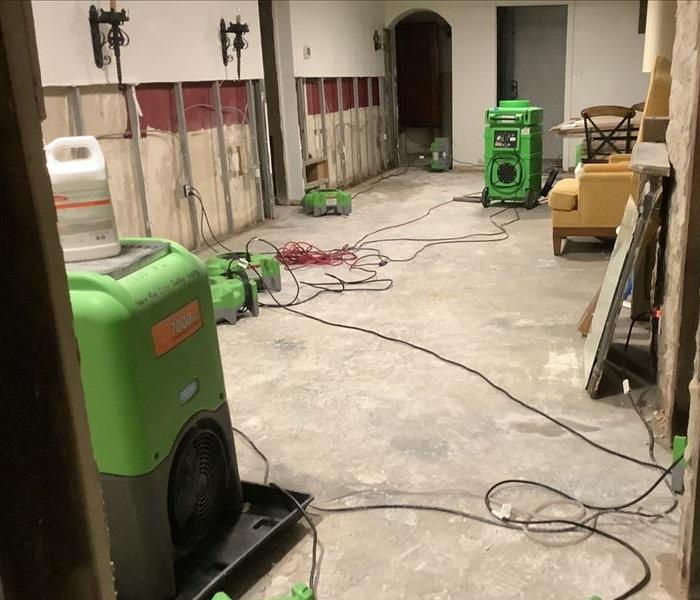 SERVPRO of Balch Springs equipment hard at work at a Balch Springs library. We will keep you updated!
SERVPRO of Balch Springs equipment hard at work at a Balch Springs library. We will keep you updated!
Water damage can wreak havoc on your home, causing structural issues, mold growth, and damage to your belongings. Whether it's from a burst pipe, a leaking roof, or a natural disaster, swift action is crucial to mitigate the damage and restore your home to its preloss condition. In this guide, we'll walk you through the comprehensive water damage restoration process.
1. Assessment and Inspection:
The first step in water damage restoration is a thorough assessment and inspection of the affected areas. Trained professionals will evaluate the extent of the damage, identify the source of the water intrusion, and categorize the water based on its contamination level (clean, grey, or black water).
2. Water Extraction:
Once the assessment is complete, the next step is water extraction. Industrial-grade pumps and vacuums are used to remove standing water from the premises. This step is essential for preventing further damage and mold growth.
3. Drying and Dehumidification:
After water extraction, the drying process begins. High-powered fans and dehumidifiers are strategically placed to remove moisture from the air and surfaces. This helps prevent secondary damage and inhibits mold growth.
4. Cleaning and Sanitizing:
All affected surfaces and belongings are thoroughly cleaned and sanitized to eliminate any traces of contamination and prevent microbial growth. This may involve using antimicrobial solutions and specialized cleaning techniques.
5. Restoration and Repairs:
Once the area is completely dry and sanitized, restoration and repairs can begin. This may involve replacing damaged drywall, flooring, insulation, and other structural components. The goal is to restore your home to its preloss condition, both aesthetically and functionally.
6. Mold Remediation:
In cases where mold growth is present, specialized mold remediation techniques are employed to safely remove mold colonies and prevent recurrence. This may include containment, air filtration, and the use of antimicrobial agents.
7. Monitoring and Follow-Up:
Even after the restoration process is complete, monitoring is essential to ensure that there are no lingering issues or signs of water damage. Follow-up inspections may be conducted to verify the effectiveness of the restoration efforts and address any concerns.
Conclusion:
Water damage restoration is a complex process that requires expertise, equipment, and swift action. By following these steps and enlisting the help of experienced professionals, you can mitigate the damage, restore your home, and regain peace of mind. Remember, when it comes to water damage, time is of the essence, so don't hesitate to seek help at the first sign of trouble.
Fire Damage Restoration can Be Stressful, But We're Here to Help!
2/8/2024 (Permalink)
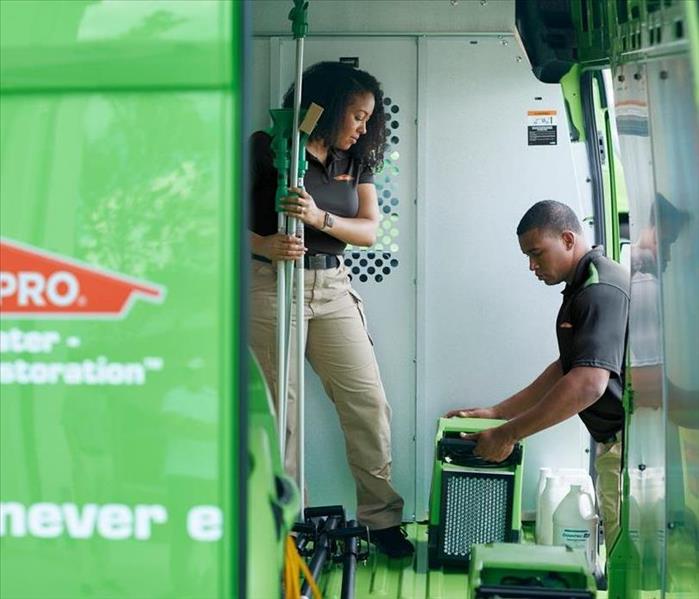 SERVPRO of Balch Springs is ready to help when a fire emergency occurs.
SERVPRO of Balch Springs is ready to help when a fire emergency occurs.
SERVPRO of Balch Springs has the years of experience and equipment needed to handle a fire damage disaster. Let's read how we get it done!
1. Assessment and Inspection:
- The restoration process begins with a thorough assessment and inspection of the property. Professionals examine the extent of the fire damage, including structural damage, smoke residue, and water damage from firefighting efforts.
2. Emergency Board-Up and Tarping:
- To secure the property and prevent further damage, restoration companies may board up windows, doors, and other openings. They may also tarp the roof to protect it from the elements.
3. Water Extraction and Drying:
- If water damage is present due to firefighting efforts, restoration companies will extract standing water and begin the drying process using specialized equipment such as pumps, dehumidifiers, and air movers.
4. Smoke and Soot Removal:
- Smoke and soot can permeate various surfaces and materials, causing discoloration, odor, and respiratory issues. Restoration professionals use specialized techniques and cleaning agents to remove smoke residue from walls, ceilings, floors, furniture, and other belongings.
5. Odor Elimination:
- Lingering smoke odors can be pervasive and persistent. Fire damage restoration companies employ various methods, such as ozone treatments, thermal fogging, and air scrubbing, to eliminate odors and improve indoor air quality.
6. Structural Repairs and Reconstruction:
- Depending on the severity of the fire damage, restoration companies may need to repair or replace structural elements such as walls, floors, ceilings, and roofing. They also address electrical, plumbing, and HVAC systems that may have been damaged by the fire.
7. Content Cleaning and Restoration:
- Restoration companies clean and restore salvageable belongings affected by the fire, including furniture, clothing, electronics, documents, and sentimental items. This may involve specialized cleaning techniques such as ultrasonic cleaning, dry cleaning, and ozone treatments.
8. Restoration and Reconstruction:
- Once the property has been cleaned and dried, restoration professionals begin the process of restoring and reconstructing damaged areas to their pre-fire condition. This may involve painting, flooring replacement, cabinetry installation, and other finishing touches.
9. Coordination with Insurance Providers:
- Fire damage restoration companies often work closely with insurance providers to streamline the claims process and ensure that homeowners receive the compensation they need to cover the cost of restoration and repairs.
10. Follow-Up and Quality Assurance:
- After the restoration process is complete, companies may conduct follow-up inspections to ensure that all work has been performed to industry standards and that customers are satisfied with the results.
A History of SERVPRO in Blog Form!
1/16/2024 (Permalink)
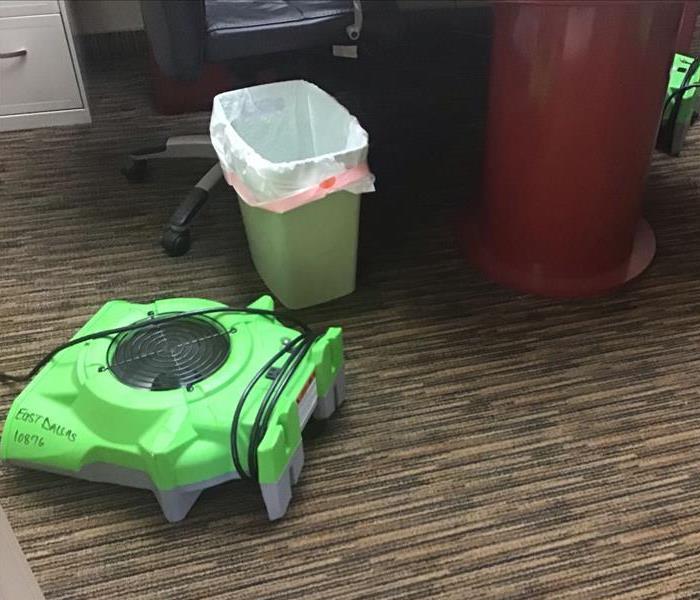 SERVPRO of Balch Springs is hard at work and ready to handle any size disaster.
SERVPRO of Balch Springs is hard at work and ready to handle any size disaster.
SERVPRO, a name synonymous with swift and reliable restoration services, has a rich history that dates back to its inception in 1967. Founded by Ted and Doris Isaacson, this dynamic couple set out to create a company dedicated to helping individuals and communities recover from disasters. Let's delve into the remarkable history of SERVPRO and how it has evolved into a leader in the restoration industry.
In 1967, Ted and Doris Isaacson established SERVPRO as a painting business in Sacramento, California. However, recognizing the growing need for specialized cleaning and restoration services, they shifted the company's focus. The vision was clear: to be a trusted partner in times of crisis, providing efficient and professional restoration assisted.
1980s marked a significant period of growth for SERVPRO. Ted and Doris's son, Rick Isaacson, took over the leadership, and the company began offering franchises, allowing entrepreneurs to join the SERVPRO family. This expansion strategy proved successful, and SERVPRO quickly became a national presence, offering its services across the United States.
Entering the new millennium, SERVPRO continued to innovate, embracing advanced technologies to enhance its restoration capabilities. The company introduced the SERVPRO DryBook, a proprietary tool that provides real-time updates and documentation during the restoration process. This commitment to innovation and efficiency has positioned SERVPRO as an industry leader.
SERVPRO has played a crucial role in disaster response, earning a reputation for its rapid and effective interventions during natural disasters. From hurricane-ravaged areas to communities affected by wildfires, SERVPRO teams have been on the front lines, providing critical restoration services and helping communities rebuild.
Beyond its core business, SERVPRO has maintained a strong commitment to community involvement and social responsibility. The company actively participates in initiatives that contribute to the well-being of local communities, reinforcing its role as a responsible corporate citizen.
Over the years, SERVPRO's dedication to excellence has been acknowledged through various awards and accolades. These recognitions underscore the company's commitment to delivering top-notch restoration services and maintaining the highest standards in the industry.
As we reflect on the history of SERVPRO, it becomes evident that the company's success is rooted in a dedication to service, innovation, and community. From its humble beginnings in the late 1960s to its current status as a global leader in restoration, SERVPRO continues to uphold its founders' vision of helping others in their time of need. With a history built on resilience and service, SERVPRO stands ready to face the challenges of the future, embodying the spirit of restoration excellence.
Winter Storm Awareness: Balch Springs Edition
1/16/2024 (Permalink)
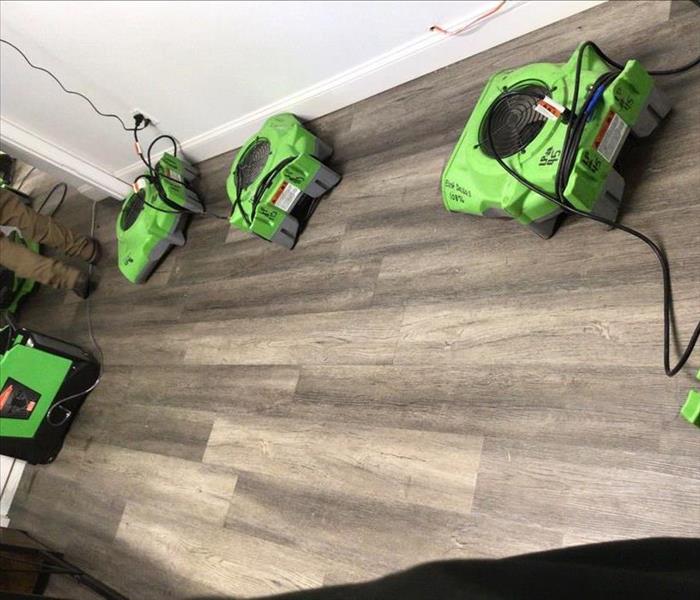 We are thankfully located in Balch Springs so we are able to reach any size disaster.
We are thankfully located in Balch Springs so we are able to reach any size disaster.
Winter brings a picturesque landscape covered in snow, but it also brings the potential for severe winter storms that can impact communities in various ways. In this blog, we'll delve into winter storm awareness and offer tips on how to stay safe and prepared when the chill sets in.
Understanding Winter Storms:
Winter storms can bring a combination of snow, ice, freezing rain, and frigid temperatures. Understanding the different elements of winter storms is crucial for preparedness.
Winter Storm Categories:
- Snowstorms: Heavy snowfall can create hazardous road conditions and lead to power outages.
- Ice Storms: Accumulation of ice on surfaces, including power lines and trees, poses risks.
- Blizzards: High winds and low visibility accompany heavy snowfall, causing dangerous conditions.
Winter Storm Preparedness:
Before the Storm:
- Emergency Kit: Prepare an emergency kit with essentials such as non-perishable food, water, medications, flashlight, blankets, and a first aid kit.
- Winterizing Your Home: Insulate pipes, seal gaps, and ensure proper insulation to keep your home warm.
- Weather Alerts: Stay informed about weather forecasts and warnings. Sign up for emergency alerts from local authorities.
During the Storm:
- Stay Indoors: Avoid unnecessary travel during severe winter weather. If travel is necessary, let someone know your route and expected arrival time.
- Keep Warm: Dress in layers, stay dry, and use blankets to maintain warmth indoors.
- Power Outages: Be prepared for power outages. Use alternative heating sources safely and conserve energy.
After the Storm:
- Check on Neighbors: Ensure the well-being of neighbors, especially those who may need assistance.
- Snow Removal: Safely clear snow from driveways and walkways. Prevent ice buildup to avoid slips and falls.
- Inspect Your Home: Check for any damage to your home, such as leaks or ice dams. Address issues promptly.
- Winter Tires: Consider using winter tires for improved traction.
- Slow and Steady: Drive at a safe and steady pace, keeping a safe distance from other vehicles.
- Emergency Kit in Vehicles: Keep an emergency kit in your vehicle, including a blanket, flashlight, and non-perishable snacks.
Connect with local community resources and support systems. Many communities offer assistance during severe winter weather, such as shelters, transportation services, and outreach programs.
Preparedness. By understanding the risks, staying informed, and taking proactive measures, you can navigate the winter season safely. Whether enjoying the beauty of a snowy landscape or facing the challenges of severe weather, being prepared ensures you can weather the storm with confidence. Stay warm, stay safe!



 24/7 Emergency Service
24/7 Emergency Service








